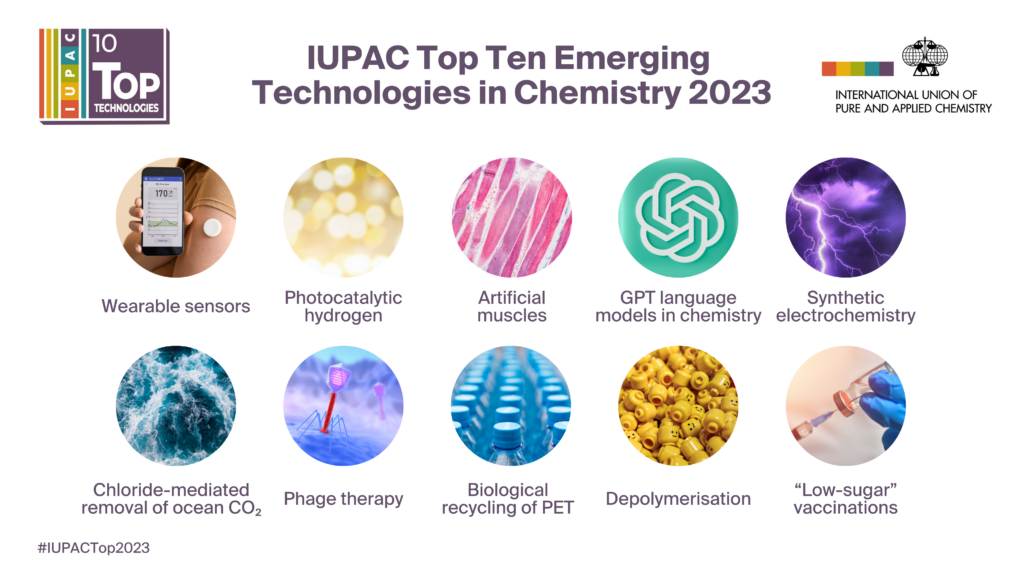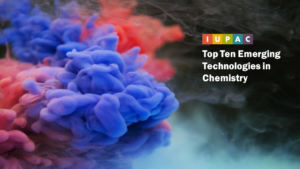The 2023 finalists are (in alphabetical order):
- Artificial muscles
- Biological recycling of PET
- Chloride-mediated removal of ocean CO2
- Depolymerisation
- GPT language models in chemistry
- Low-sugar vaccination
- Phage therapy
- Photocatalytic hydrogen
- Synthetic electrochemistry
- Wearable sensors
Read full release (posted 16 Oct 2023) | #IUPACTop2023
A feature article presenting details on each technology is published in the October 2023 issue of IUPAC magazine Chemistry International.
See also the DeGruyter Conversations, Science & Technology blog post (posted 18 Dec 2023)
The search for the 2024 Top Ten has started.
Make a nomination by 31 March 2024
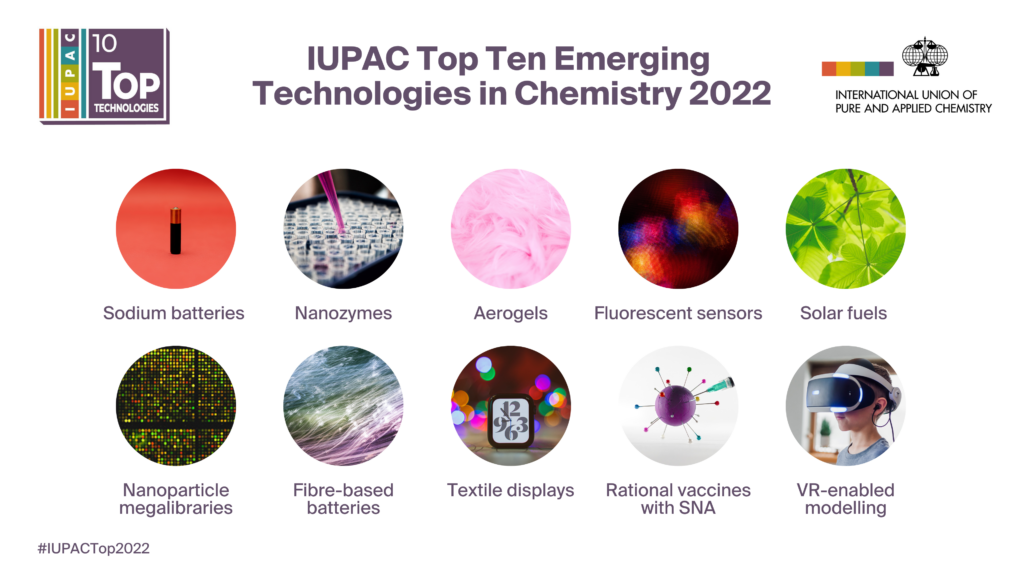
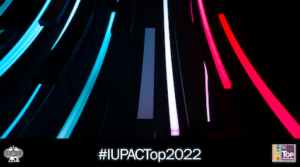 The 2022 finalists are (in alphabetical order):
The 2022 finalists are (in alphabetical order):
- Aerogels
- Fibre batteries
- Film-based fluorescent sensors
- Liquid solar fuel synthesis
- Nanoparticle mega libraries
- Nanozymes
- Rational vaccines with SNA
- Sodium-ion batteries
- Textile displays
- VR-enable interactive modeling
Read full release (posted 17 Oct 2022) | #IUPACTop2022
A feature article presenting details on each technology is published in the October 2022 issue of IUPAC magazine Chemistry International, https://doi.org/10.1515/ci-2022-0402
See also published in Angewandte Chemie International Edition, ‘Chemical Solutions to the Current Polycrisis’ by Fernando Gomollón-Bel and Javier García-Martínez, https://doi.org/10.1002/anie.202218975 (First published: 09 May 2023)
The goal of this Top Ten Emerging Technologies in Chemistry project is to showcase the value of Chemistry and to inform the general public as to how the chemical sciences contribute to the well-being of society and the sustainability of Planet Earth. Since 2019, the Jury selects emerging technologies on the basis of those in between a new scientific discovery and a fully-commercialized technology, and those with the greatest capacity to open new opportunities in chemistry and beyond.
The search for the 2023 Top Ten has started.
Make a nomination by 10 April 2023
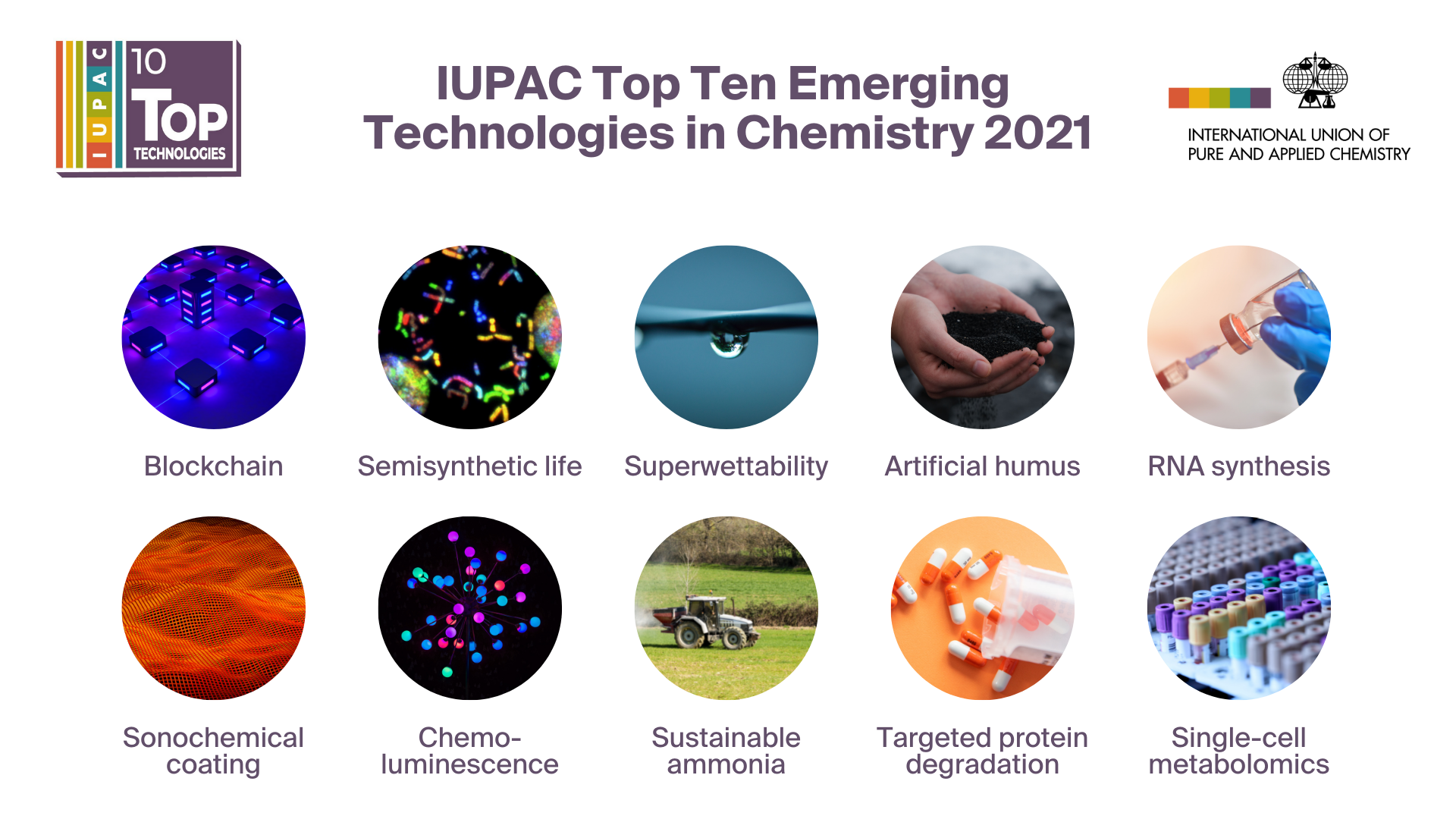 The 2021 finalists are (in alphabetical order):
The 2021 finalists are (in alphabetical order):
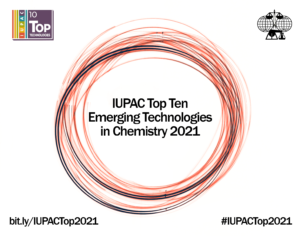 • Artificial humic matter from biomass
• Artificial humic matter from biomass
• Blockchain technology
• Chemiluminescence for biological use
• Chemical synthesis of RNA and DNA
• Semi-synthetic life
• Single cell metabolomics
• Sonochemical coatings
• Superwettability
• Sustainable production of ammonia
• Targeted protein degradation
Read full release (posted 18 Oct 2021) | #IUPACTop2021
A feature article presenting details on each technology is published in the October 2021 issue of IUPAC magazine Chemistry International.
See also Gomollón-Bel, F., García-Martínez, J. Emerging chemistry technologies for a better world. Nat. Chem. (2022). https://doi.org/10.1038/s41557-021-00887-9 (published 31 Jan 2022)
2022 Sponsors
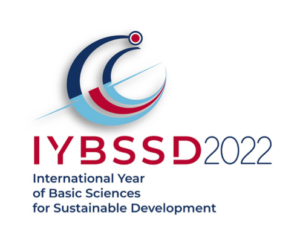 |
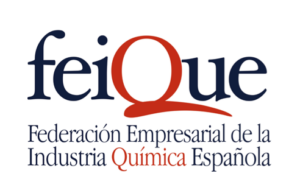 |
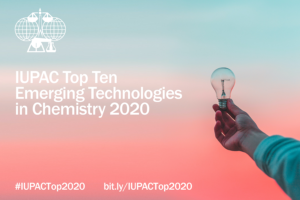 The 2020 finalists were (in alphabetical order):
The 2020 finalists were (in alphabetical order):
- Aggregation-induced emission
- Artificial intelligence applied to chemistry
- Dual-ion batteries
- High-pressure inorganic chemistry
- Liquid gating technology
- Macromonomers for better plastic recycling
- Microbiome and bioactive compounds
- Nanosensors
- Rapid diagnostics for testing
- RNA vaccines
See release; details are featured in the Oct 2020 issue of Chemistry International.
This initiative started in 2019 in recognition of IUPAC’s Centenary. Its end goal is to showcase the value of Chemistry (and chemists!) and to inform the general public as to how the chemical sciences contribute to the well-being of Society and the sustainability of Planet Earth. The 2020 call for proposals has been released mid June 2019 (see details). The Top Ten Emerging Technologies in Chemistry will be selected and published each year.
The next search for the 2021 Top Ten Emerging Technologies in Chemistry has already begun – make a nomination here by 31 March 2021. See details call.
The results of the first search for the Top Ten Emerging Technologies in Chemistry were announced on 1 April 2019. See release and background.
- Nanopesticides
- Enantio-Selective Organocatalysis
- Solid-State Batteries
- Flow Chemistry
- Reactive Extrusion
- Metal Organic Frameworks (MFOs)
- Directed Evolution of Selective Enzymes
- Turning Plastics to Monomers
- Reversible Deactivation of Radical Polymerization
- 3D-Bioprinting
Fernando Gomollón-Bel published a feature with details on the first top ten; see Chem Int Apr 2019 <https://doi.org/10.1515/ci-2019-0203>.
See also feature on chemistryworld.com 3 Apr 2019.

